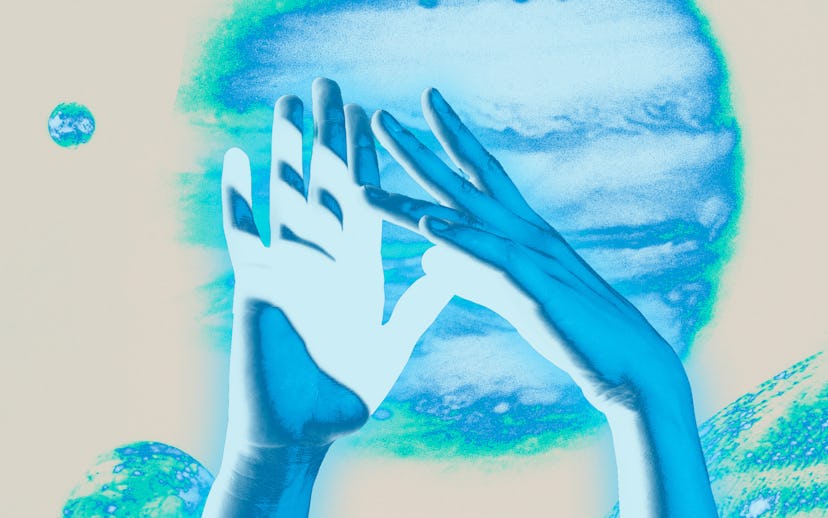
Astrology
An Astrologer’s Guide To Turning The Winter Solstice Into A New Beginning
How to celebrate the start of Capricorn season and the longest night of the year with a dungeon orgy — or by writing poetry.
The darkest day of the year is upon us: Dec. 21 marks the winter solstice, when the Northern Hemisphere experiences minimal sunlight, right before the days start to get longer. The solstice coincides with the launch of Capricorn season, the official astrological dawn of winter, and has had corresponding celebrations in just about every culture from time immemorial. But what exactly goes down on this long night of dark and shadow, and how should you honor it?
In the planetary dance around the sun, some characters move in perfect step, while a few have a way of missing the beat. Take the earth, which orbits the sun at a slight tilt, its poles veering towards or away from it. Come the winter solstice, the North Pole is at its furthest tilt from the sun’s light, with the South Pole basking in all the heat. Over the next few months, the Northern Hemisphere will slowly tilt back towards the sun in the lead-up to spring. For now, we have arrived at peak darkness, when the days are at their shortest, before the sun slowly reclaims its time.
Before the advent of Bagel Bites and industrial agriculture, January to April were thought of as famine season, when food would be scarce and long-term planning was necessary. Capricorn is ruled by Saturn, the master and governor, and the sign’s penchant for organization was essential for surviving the winter to come.
Capricorn’s Tarot correspondence is the devil, the dark deviant within us, the desire which threatens to tear through the matrix. Not coincidentally, the winter solstice goes down during the Roman celebration of Saturnalia, a week of reversals in which enslaved people would be served by their masters, work would be suspended, and revelry was indulged. Because of the literal polarity of this moment, the solstice is meant to bring us into contact with extremes; in the case of Saturnalia, the Romans understood the necessity of letting the devil have his day before rolling up their sleeves and getting back to the grind.
“We have to die, just a little, in order to survive. Why not make a night of it?”
The encounter with darkness is the defining theme of solstice celebrations throughout the world. In Zoroastrian conception, this day of extended darkness would leave us most vulnerable to the forces of the underworld; families would stay awake all night and keep one another company until the demons passed. This would evolve into the Persian holiday of Shab-e-Yalda or Shab-e-Chelleh, a late night of eating auspicious foods, drinking, and poetry. The Chinese observance of Dongzhi calls for similar gatherings. The Korean “Small Seoul” celebration used to involve the smearing of red bean porridge on doors to ward off evil.
At the point of Sol’s weakest light, the solstice was thought to correspond with the death of the sun before its inevitable rebirth. The Romans celebrated Dec. 25 as Sol Invictus, the “unconquerable sun,” and pagans heralded the rebirth of the horned god at Mists of Avalon-style Yule celebrations. The sun is the king, the most literal incarnation of God, and this cycle of death and renewal was (and is) essential to our understanding of time, death, grief, and faith. Inevitably, the 25th would correspond to the supposed birth of Jesus, a god-son meant to die and return, like Osiris, Dionysus-Zagreus, and Dumizid before him. In these deities, we understand our own microcosmic annihilation, the parts of ourselves which must be released so that we may begin a new cycle. We have to die, just a little, in order to survive. Why not make a night of it?
Around the time of the solstice, we begin to share our resolutions for the new year in perfect keeping with Capricornian tradition — and even the Roman holiday of Brumalia, in which prophecies were shared for the season to come. All lovely, but to temper a sense of false optimism, why not embrace the doubts and demons lurking in the darkness? The solstice brings you out of denial and into the embrace of Saturnian accountability. How do you need to get honest with yourself: through sharing reflections and poetry with your loved ones, or by going wild at the dungeon orgy?
What do you need to face, endure, and even embrace the dark months ahead? In 2023, the winter solstice goes down during a Mercury retrograde in Capricorn, which calls you to take ownership over your finances and destiny. How do you parent yourself? How can you take responsibility over your care and happiness in the wintertime, and what forms of merriment can you integrate into the proceedings? If you can reckon with both dark and light, you’ll signal to the gods that you can dance. Take this moment to face it all, so that the year to come can begin in honesty and possibility.